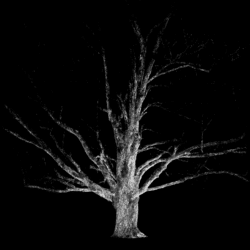Specified Gifts of Capital from One Charity to Another
Recent conversations we have had with representatives of CCRA will be of interest to lawyers who work with charities that have related foundations. Goodman and Carr are asking, on behalf of a client, for a ruling in respect of a specified gift from a registered charity organized as a corporation to a registered charity organized as a trust. It appears likely that a ruling will be denied because of what can only be described as a technical flaw in the relevant statutory provisions. It is fair to say that if the relevant statutory provisions are read in the way CCRA currently prefers, the specified gift rules in the Act will be undermined completely.
The specified gift rules permit one charity to make a gift of capital to another in such a way that the gift does not count towards the satisfaction of the donor charity’s disbursement quota and is not included in the donee charity’s disbursement quota (although it does form part of the donee charity’s property for the purposes of Regulation 3701). The specified gift rules are used in a variety of circumstances, perhaps the most common being charities establishing a foundation with donations received by bequest and charities whose property is being applied cy-pres. In this case, the client is transferring 10-year gifts from one foundation, the corporation, to another, the trust. A ruling was sought out of an abundance of caution. To our shock and dismay, it appears the request may be denied.
The prevailing view is that the consequences of a gift from one charity to another which is being designated by the donor charity as a specified gift, are
1) that the assets transferred from the donor charity to the donee charity will be excluded from the calculation of the disbursement quota of the donee charity by virtue of clause Bin the definition “disbursement quota” in subsection 149.1 (1), and 2) that the specified gift will not, by virtue of the provisions of subsection 149.1 (1.1) and clause A.1 of the definition “disbursement quota” in subsection 149.1 (1), be included in the donee charity’s disbursement quota. CCRA takes the view that such a gift is included in the donor charity’s disbursement quota by virtue of clause A.1 of the definition because the deeming rule in subsection 149.1 (1.1) does not deem a specified gift not to be an “amount expended” for the purposes of that clause. This gives rise to the perverse result that the gift generates an increased quota, but cannot itself be counted as expended in satisfaction of the quota.
This reading of subsection 149.1 (1.1), therefore, completely undermines the specified gift rules.
The specified gift regime (including subsection 149.1 (1.1) was adopted in 1984, a year in which substantial reforms to the disbursement quota regime were adopted, all of a “tightening” nature. In the same group of amendments were what is now clause B of the definition (the inter-charity gift inclusion) and what is now subclause A(b) of the definition (the 10-year gift exclusion). One of the Government’s objectives in the adoption of this new regime was to ensure that the disbursement quota could not be avoided by the cycling of gifts among related charities. That was effected by the adoption of clause B of the definition. The specified gift regime was intended as a specific exception to this new regime. Its operating premise is that there is no subversion of the disbursement quota regime if the donating charity cannot count the specified gift as an expenditure that counts towards satisfying its disbursement quota.
What is now clause A.1 was not adopted until 1992. It was adopted, as the Technical Notes explain, to deal with a minor problem in the regime that was created in 1984, namely, to prevent the unintended generation of disbursement quota excesses when 10-year gifts are ultimately expended by a charity. It should not be interpreted, in our view, as an integral part of the regime, especially if the effect of such an interpretation is to undermine completely the purpose of the specified gift regime. This seems to be the reading of it that CCRA prefers.
Discussions continue.
DAVID P. STEVENS
Goodman and Carr LLP, Barristers and Solicitors, Toronto, and Editor, The Philanthropist


